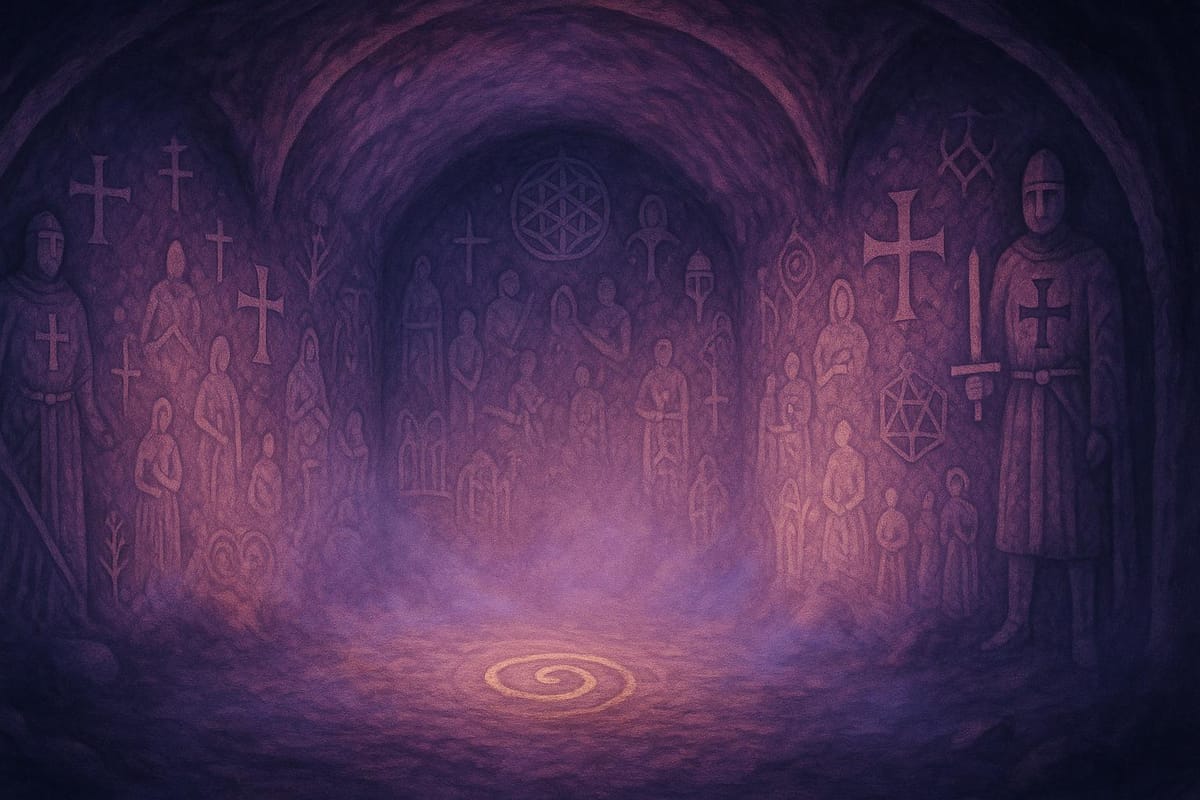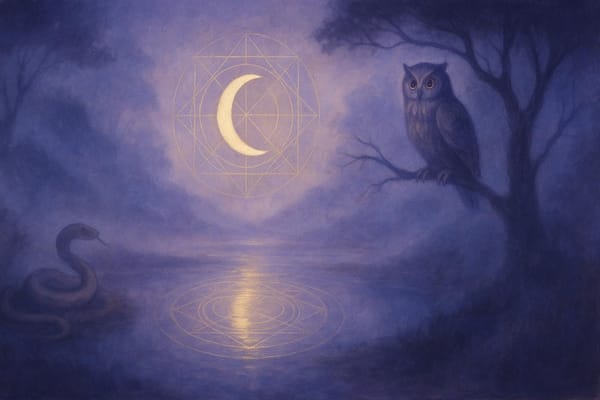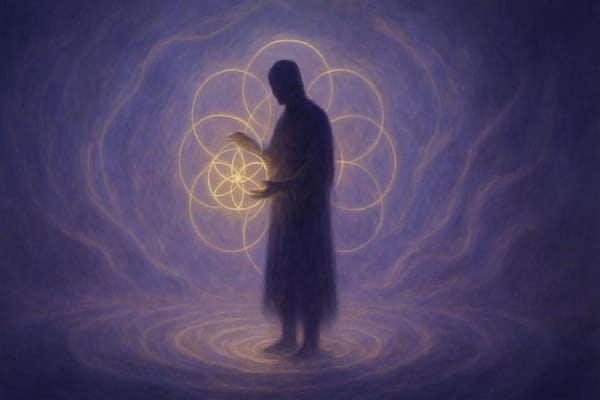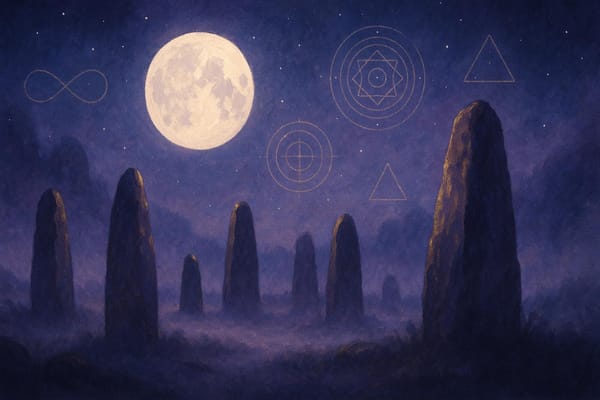Royston Cave: The Templar Vault Below the Veil
Explore the mysteries of Royston Cave, its intriguing medieval carvings, and potential connections to the Knights Templar.

Royston Cave is a mysterious underground chamber in Hertfordshire, England, discovered in 1742. It’s famous for its medieval carvings, possible ties to the Knights Templar, and its location at the crossroads of two ancient Roman roads. Here’s a quick summary:
- Discovered: August 1742, beneath a millstone during market construction.
- Features: A bell-shaped chamber with carvings of saints, Christian imagery, and symbols like two knights on one horse.
- Knights Templar Connection: Speculated but debated. Some historians suggest it was used for rituals or storage, while others argue the carvings date to after the Templar period (1360–1390).
- Historical Significance: Positioned at the intersection of Ermine Street and Icknield Way, two major Roman trade routes.
- Artifacts Found: Human bones, vessel fragments, and a brass object, hinting at ritualistic use.
- Energy Lines: Sits on ley lines believed to channel Earth’s energy, adding to its spiritual allure.
Why Visit? Royston Cave blends history, mystery, and medieval art. Guided tours offer a 40-minute journey into its secrets, and private sessions or virtual tours are available for deeper exploration.
Key Details:
- Open: April 5–September 28, 2025 (weekends and holidays).
- Tickets: Adults $12.50, Children $5 (under 3 free).
- Location: Near Civic Centre Car Park, 4 minutes away.
Royston Cave remains an enigma, offering a rare glimpse into the past and sparking curiosity about its true purpose.
History and Origins
1742 Discovery
In August 1742, workmen installing a bench at Royston's butter market stumbled upon an unexpected find - a millstone embedded in chalk.
As they dug deeper, they uncovered a narrow shaft leading to a bell-shaped chamber. Inside, they found earth, debris, human remains, and intriguing artifacts, including a skull, fragments of an ancient drinking vessel, and a piece of brass.
This remarkable discovery sparked curiosity and laid the groundwork for the legends surrounding the cave, particularly its rumored connection to the Knights Templar.
Knights Templar Links
The cave's ties to the Knights Templar have long been a source of intrigue. Historical records confirm the Templars were active in the area, founding the nearby town of Baldock in the 1140s and engaging in trade at Royston's butter market between 1149 and 1254.
"The risk here is people have been wanting to tell stories since day one: 'Come and see the Templar cave!'" – Tobit Curteis, cave conservator
Local historian Sylvia Beamon has suggested that the cave may have been used by the Templars for practical purposes, such as food storage, daily prayers, or even as temporary lodging during their market visits.
However, not everyone agrees on a direct Templar connection. In 2012, a stylistic analysis conducted by the Royal Armouries Museum in Leeds dated the cave's carvings to between 1360 and 1390 - well after the Templar period had ended. This dating has led some historians to question the cave’s direct link to the Templars.
Ancient Trade Routes
The cave’s location beneath the crossroads of Ermine Street and Icknield Way highlights its strategic importance. Ermine Street was a major Roman road connecting London to York, while Icknield Way, often considered Britain’s oldest road, stretched from East Anglia to Salisbury Plain.
This prime position along key trade routes underscores the cave’s historical significance and raises the possibility that it served as a hidden sanctuary or waypoint for travelers navigating these ancient pathways.
Royston Cave: A Knights Templar Ritual Cave? Royston England UK
Cave Design and Carvings
Royston Cave isn’t just a historical curiosity - it’s a space where architecture and symbolism intertwine, creating layers of intrigue.
Bell-Shaped Structure
The cave’s bell-shaped chamber, carved directly into chalk, reflects both medieval craftsmanship and symbolic intent.
This design is thought to echo the Etruscan concept of mundus - a sacred shaft believed to connect the living world with the afterlife. The cylindrical base rising into a domed ceiling mirrors the celestial vault, emphasizing its spiritual undertones.
"Tis of an elegant bell-like, or rather mitral form, well turned, and exactly circular" - Dr. Stukeley
Wall Carvings
The walls of Royston Cave are adorned with an extraordinary array of medieval carvings, setting it apart from other subterranean chambers in Britain. A 2012 analysis by the Royal Armouries Museum dated these carvings to between 1360 and 1390, based on the costumes and hairstyles depicted.
Among the carvings are significant religious figures, including St. Catherine, the Holy Family, the Crucifixion, St. Lawrence, St. George (or possibly St. Michael), and St. Christopher.
One particularly intriguing carving shows two knights sharing a horse, which could be a nod to the Knights Templar. Another depicts a figure holding a skull and candle, hinting at initiation ceremonies.
"We've lost 99% of the other artwork from that period, so the cave really is incredibly special. Just maybe not for the reasons that some people think." - Tobit Curteis, Cave Conservator
Platform Evidence
Beyond the carvings, the cave’s structural features suggest it was more than just a canvas for medieval art.
A 1976 examination uncovered remnants of an octagonal step, post holes, and wall niches - evidence pointing to a sophisticated wooden platform system. This platform likely had both ceremonial and practical uses.
Former cave manager Peter Houldcroft’s reconstruction analysis revealed a free-standing structure that optimized the cave’s space. It allowed access to upper wall niches while also supporting ritual activities.
The octagonal step and platform design align with historical accounts of medieval sanctuaries, suggesting the cave was meticulously planned to serve dual purposes: storage and spiritual ceremonies.
Energy Properties
Earth Energy Lines
Royston Cave's location is uniquely tied to the Earth's natural energy pathways. It sits at the convergence of ancient ley lines - those unseen, mystical routes believed to channel the planet's energy.
One of these, the Michael Line, famously intersects with another energy line near the cave. This same line also passes through iconic sites like Stonehenge and Avebury.
Adding to its intrigue, the cave lies about 26 feet (8 meters) beneath the historic crossroads where the Icknield Way meets Ermine Street. It's possible this spot was chosen deliberately. Some historical accounts even suggest that the Knights Templar may have used dowsing techniques to locate and potentially influence these energy currents.
Reported Effects
The energy currents at Royston Cave seem to have a noticeable impact on visitors' sensory experiences. Studies have shown that within enclosed cave environments, oxygen levels can drop from 21% to 18% in just 15 minutes.
This mild reduction in oxygen, or hypoxia, can trigger increased dopamine release. Such physiological changes might explain the unique sensory perceptions reported by those who visit the cave - sensations that stand out from typical underground experiences.
Natural Factors
Several physical features of the cave amplify its effects:
- The chalk bedrock highlights the distinct geology of the area.
- Its depth and isolation create a heightened sensory environment.
- The chamber's shape enhances its acoustic qualities.
Research has demonstrated how conditions like sensory deprivation, darkness, and specific acoustic environments can disrupt circadian rhythms and shift perceptual states. Yafit Kedar, a Doctoral Candidate in Archaeology and Near Eastern Cultures at Tel Aviv University, elaborates:
"We contend that entering these deep, dark caves was a conscious choice, motivated by an understanding of the transformative nature of an underground, oxygen-depleted space."
The cave's location at the intersection of ancient trade routes, combined with these natural characteristics, suggests a deliberate selection of the site to amplify its ceremonial or spiritual significance. Modern research continues to uncover how these elements may have been used to create profound experiences for those who entered.
Templar Ceremonies
Dark Room Rituals
The unique design of the cave hints at its potential use for Templar rituals. For instance, a shallow depression in the eastern wall, paired with an octagonal step, suggests a specific ceremonial area.
Adding to this theory is a carving of a figure holding a skull and candle - symbols often associated with initiation rites. Evidence of post holes indicates that wooden platforms once existed, likely elevating parts of the chamber to access niches used during ceremonies.
The lighting appears to have been carefully controlled with oil-burning lamps, while an eastern ventilation shaft helped manage airflow. These features have fueled speculation and legends, including tales connecting the site to the Holy Grail.
Grail Connections
Some legends tie the cave to the mysteries of the Holy Grail, drawing comparisons between its circular design and the Church of the Holy Sepulchre in Jerusalem. However, historical records suggest that the Templars likely used the cave for more practical purposes - prayers, food storage, or even lodging during market days - rather than as a sacred Grail chamber.
"In real life, the Templars were not a subterranean order." – Professor Helen Nicholson
The site’s practical uses, especially during periods of tension with the nearby Royston Priory, seem more plausible based on historical evidence.
Similar Sites
Studies comparing Royston Cave to other medieval locations reveal some intriguing parallels. A stylistic analysis conducted in 2012 dates the carvings to around 1350 - well after the Templars' active era. While the cave's circular design is notable, round churches were common in areas unrelated to Templar activity.
"What makes the cave so intriguing to visitors and historians is that it's still an enigma; still a mystery as to who made it, or when or why." – Nicky Paton
The mystery deepens due to the damaged state of key carvings, including the famous two-knight image. These deteriorations make it challenging to draw firm conclusions about the cave's original purpose.
Visitor Information
After uncovering the secrets of Royston Cave, why not plan a visit to experience its wonders in person?
Hours and Access
Royston Cave opens its doors from April 5 to September 28, 2025, welcoming visitors on Saturdays, Sundays, and Bank Holidays. Access is guided tour only, with each tour lasting approximately 40 minutes. Admission fees are as follows:
- Adults: $12.50
- Seniors (65+) and students: $10
- Children (3–15): $5
- Children under 3: Free (with an accompanying adult)
For those seeking a more tailored experience, private tours are available year-round at $187.50 per hour for groups of up to 15 people. Schools and educational groups can book 30-minute tours for $75.
Visit Tips
Before heading out, here are a few things to keep in mind:
- The cave involves navigating 21 steps and a steep incline, which may be slippery.
- Wear sturdy, non-slip shoes for safety.
- Arrive 10 minutes early to ensure a smooth start to your tour.
- Parking is available at the Civic Centre Car Park, just a 4-minute walk away.
- Tickets must be booked online at least one day in advance.
For those seeking tranquility, private meditation sessions can also be arranged through the cave’s management team.
Digital Access
Can’t make it in person? You can explore Royston Cave virtually through a 3D virtual reality tour created by Virtronix. This high-definition experience offers:
- Unique perspectives of carvings, including views previously inaccessible to visitors.
- The ability to zoom in on intricate architectural details.
- A 360-degree navigation of the chamber’s layout.
The official website also features a 'Visual Story' and 'Sensory Map', which provide an immersive preview of the cave’s sights, sounds, and overall atmosphere.
Important Note: There are no restrooms on-site, but public facilities are available nearby via a community scheme. Be sure to check the website for any weather-related closures before planning your visit.
Conclusion
Royston Cave, nestled in Hertfordshire's chalk at the crossroads of Ermine Street and Icknield Way, is a remarkable relic of medieval craftsmanship and enduring mystery. Its bell-shaped chamber is adorned with an extraordinary collection of carvings, believed to date back to the mid-14th century.
"We've lost 99% of the other artwork from that period, so the cave really is incredibly special, though its significance may differ from popular assumptions." - Tobit Curteis, Cave Conservator
These carvings, a blend of Christian imagery and pagan symbols like the Sheela na Gig, hint at a rich and complex history. The cave’s location at the meeting point of Earth energy lines - specifically the Michael and Mary ley lines - further adds to its reputation as a site of spiritual interest.
Protective symbols, known as apotropaic marks, etched into its walls, offer a glimpse into medieval efforts to ward off malevolent forces, connecting ancient beliefs to modern spiritual practices.
Royston Cave bridges the worlds of medieval artistry and spiritual exploration, preserving a past where faith, art, and mystery intertwined. Its carvings, dating from 1360–90, stand as a testament to the skill and devotion of their creators. Today, the cave continues to inspire, inviting visitors to reflect on the intersection of history, spirituality, and the human experience.
FAQs
What evidence suggests that Royston Cave was linked to the Knights Templar, and why is there uncertainty about this connection?
The idea that Royston Cave has connections to the Knights Templar stems from its elaborate carvings, which many interpret as reflecting Templar symbols, along with local legends claiming it was a hidden meeting spot.
Some researchers even suggest the cave might have functioned as a shrine or a recreation of the Holy Sepulchre, possibly used for rituals or gatherings.
That said, there’s no solid historical documentation linking the Templars to the cave before its accidental discovery in 1742. This absence of evidence has fueled debates, with some scholars proposing other explanations, such as the cave being a hermitage or a religious site unrelated to the Templars. Its true purpose remains a mystery, adding to its captivating intrigue.
How do the energy lines and Royston Cave's location enhance its spiritual significance and visitor experiences?
Royston Cave lies at the intersection of the Mary and Michael ley lines, which are thought to be energy pathways connecting various sacred locations.
This unique placement is believed to enhance the cave's spiritual energy, creating a space that encourages deep reflection, heightened awareness, and even transformative moments.
Visitors frequently report sensing a unique energy within the cave's dim, enclosed interior. The combination of its ancient carvings and mysterious past creates an atmosphere that feels both charged and calming.
This blend of history and spirituality draws people seeking a space for rituals or personal introspection, solidifying its reputation as a site of deep spiritual and historical fascination.
What do the carvings in Royston Cave tell us about its historical and spiritual significance?
The carvings inside Royston Cave showcase an intriguing mix of Christian themes and mysterious symbols. Among the detailed artwork, you'll find depictions of saints like St. Christopher and St. Catherine, along with scenes of the Holy Family.
These elements suggest the cave might have been a space for religious worship or special ceremonies. Some historians even speculate that the Knights Templar may have used it for secret rituals or initiation rites.
One particularly puzzling carving is the Sheela na Gig, a rare figure believed to ward off evil spirits. Its presence hints at a spiritual or protective purpose beyond the Christian imagery.
This combination of medieval craftsmanship and symbolic carvings makes Royston Cave a truly captivating historical site, steeped in both religious and mystical allure.




